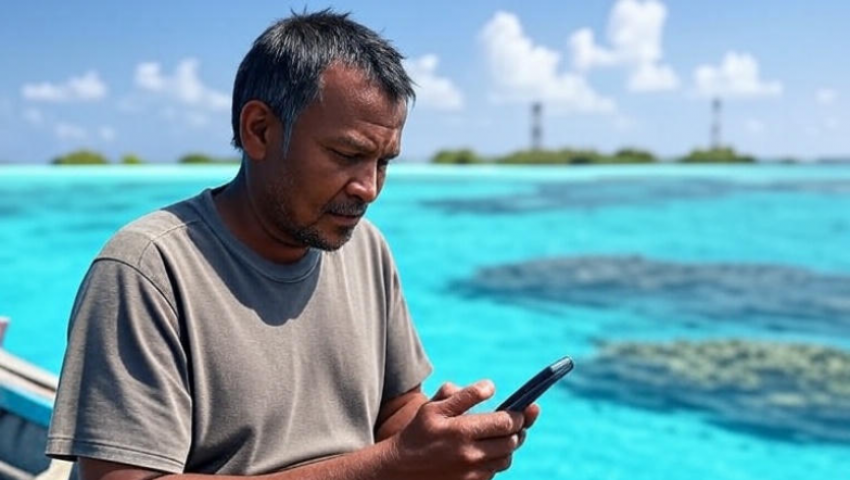
Maldives’ Free 5G Spectrum Gamble: A Digital Leap for a Nation of Islands
Discover the Maldives' bold gamble on free 5G spectrum allocation to telecom giants Dhiraagu and Ooredoo, aiming to bridge digital divides across 1,192 islands. Explore the pros of rapid connectivity for remote atolls, economic boosts, and environmental monitoring, versus risks like lost revenue and market duopoly. Is this a leap toward a digital paradise or a costly misstep?
Let’s talk about the Maldives’ wild decision to give away 5G spectrum for free to its two telecom titans, Dhiraagu and Ooredoo. I’m sitting here, sipping coffee, thinking about how most countries treat spectrum like gold, auctioning it off for billions. But the Maldives? They’re playing a different game, one that could either make them a digital paradise or leave them kicking themselves. Let me walk you through this bold move, why it’s got everyone talking, and what it means for a nation of scattered islands.
Hassan is a fisherman out on his boat in the middle of the Indian Ocean, checking fish prices on a clunky 3G connection. That’s life in the Maldives, 1,192 islands spread across a vast blue expanse, where staying connected is as tough as navigating a storm. The government’s big idea? Handing over the 5G spectrum for free can speed up the digital game. No auctions, no bidding wars, just a straight-up gift to Dhiraagu and Ooredoo. Why? So they can pour money into towers, cables, and tech to get 5G to places like Hassan’s atoll, not just the resorts. It’s a bet on a future where every island, no matter how tiny, gets a slice of the digital pie. And get this, despite the challenges, the Maldives already boasts some of the highest mobile coverage and penetration in the region, with 823,400 active mobile connections in early 2024, hitting 158.5% of its 519,400 population, thanks to tourists and multiple SIM use.
Actually the upside of this is pretty exciting. A doctor in a remote clinic, guiding a surgery via a crystal-clear 5G video feed with barely a millisecond of lag. Smart sensors in a coral reef, sending real-time data to save the Maldives’ environment. Free spectrum means operators can skip the massive upfront costs and focus on building networks fast, especially in far-flung places. With internet penetration at 83.9% in 2024 and 435,800 users, cheaper plans could let folks like Hassan afford high-speed internet. Plus, startups might jump in, cooking up apps for tourists or fishermen, turning the Maldives into a tech hub. Ooredoo’s already rolled out 5G in Greater Male in 2021 with speeds up to 1Gb/s, and by 2025, it’s reached HDh. Makunudhoo, while Dhiraagu’s LTE covers nearly all populated islands. The government’s also keeping things flexible, dodging the red tape of auctions so they can tweak spectrum rules as tech evolves.
Here’s where it gets tricky, though. I was chatting with a friend who works in telecom, and she raised an eyebrow at this no-cash move. Spectrum auctions are a goldmine, India bagged $19 billion, the U.S. a whopping $81 billion. That’s money the Maldives could’ve used for hospitals or schools, especially with climate change knocking. By giving it away, they’re betting 5G’s economic boost will outshine that lost cash. But what if Dhiraagu and Ooredoo drag their feet? Free spectrum might mean they don’t feel the heat to use it efficiently, leaving airwaves idle while Hassan’s still stuck on 3G. And with mobile broadband subscribers climbing and fixed broadband at 98,500 subscriptions in 2023, there’s pressure to keep up.
Then there’s the duopoly drama. I remember visiting a country with just two telecoms, prices were sky-high, and service was meh. Giving spectrum to only Dhiraagu and Ooredoo could lock them in as kings, making it tough for new players to shake things up. Dhiraagu holds about 60% of the market with 600,000 subscribers, while Ooredoo’s got over 440,000, and innovation might stall. Plus, skipping an open auction has folks whispering about favoritism. Was this deal above board, or did someone get a sweet handshake? The government’s got to prove this was for the people, not just the telecoms, especially with costs around $17.30 a month for a basic plan, 2% of per capita income.
So, how do they make this work? With a regulator with a clipboard, checking off milestones like a shark. The Maldives needs ironclad rules, say, 80% of the population covered by 2027, with speeds hitting over 100 Mbps. They should track every tower, every signal, to make sure operators aren’t slacking. Opening up spectrum for shared use, like the U.S. does with CBRS, could let resorts or startups tap in, sparking fresh ideas. And why not nudge operators to offer cheap plans for folks like Hassan? Down the line, they could add fees based on how much data flows, clawing back some cash without scaring off investment, especially with the nationwide fiber-optic network completed in 2025 boosting digital inclusion.
Let me leave you with a story. South Korea pulled off a 5G miracle, hitting 90% coverage in a few years by cutting spectrum costs but keeping operators on a tight leash. The Maldives could be next, a tiny nation showing the world how to go big. This free spectrum move is a gamble, no doubt. It’s about connecting a fisherman, a doctor, a tourist, across a thousand islands. With 96.2% of mobile connections now broadband-capable and 5G at 65% coverage in 2024, the stage is set. If the Maldives plays it smart, with tough oversight and a focus on every citizen, they could turn their turquoise waters into a digital beacon. But if they slip, it’s not just money they’ll lose, momentum in a race where the world’s watching. So, Maldives, what’s it gonna be?

Maldicore Support
Leave a comment
Your email address will not be published. Required fields are marked *

